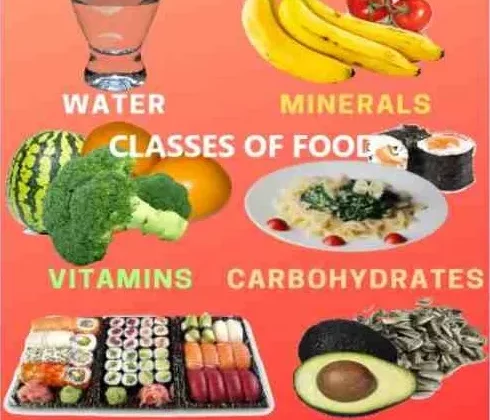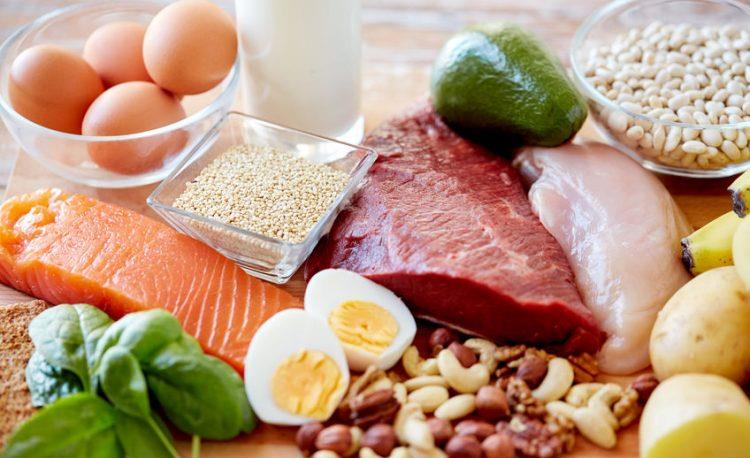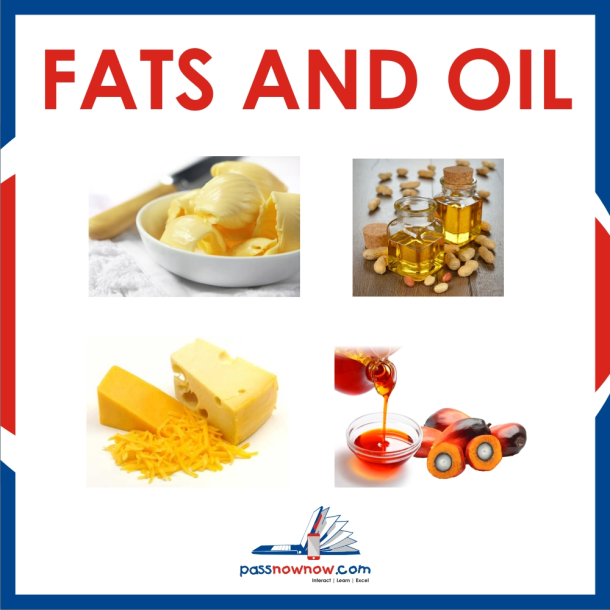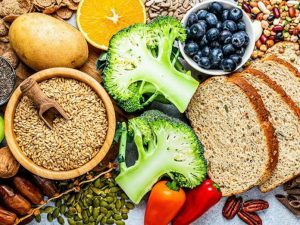
Have you ever wondered what truly fuels your body? Nutrition doesn’t have to be a complex puzzle. It’s about understanding the basic building blocks that make up the food we eat daily.
In this guide, we’ll delve into the fundamental classes of food, using simple examples to shed light on their roles in keeping us healthy and energized.
From the hearty carbohydrates that power your morning jog to the protein-packed sources that help you recover, we’ll break down the science of nutrition into bite-sized, relatable pieces. No more confusion about what’s on your plate.

Whether you’re a curious eater looking to make healthier choices or just someone who wants to appreciate the wonders of food a bit more, this journey through the classes of food will offer valuable insights into what you eat and why it matters. So, let’s embark on this culinary adventure together.
Here are classes of food and their functions
1. Carbohydrates
Carbohydrates are one of the three essential macronutrients, alongside proteins and fats, and they serve as the body’s primary source of energy. Carbs come in two main forms: complex and simple.
Complex carbohydrates, found in foods like whole grains, legumes, and vegetables, contain long chains of sugar molecules that provide a steady, sustained release of energy, making them ideal for maintaining energy levels throughout the day.
On the other hand, simple carbohydrates, found in sugars like glucose and fructose, offer quick bursts of energy but should be consumed in moderation due to their potential impact on blood sugar levels and overall health.
Balancing the types of carbohydrates in your diet is crucial for sustaining energy, promoting overall health, and managing weight.
Funtions of carbohydrates
Carbohydrates are the body’s primary source of energy. They provide fuel for various bodily functions and physical activities.
Examples of carbohydrates
- Complex Carbohydrates: Whole grains (e.g., brown rice, quinoa, oats), legumes (e.g., lentils, chickpeas), starchy vegetables (e.g., sweet potatoes).
- Simple Carbohydrates: Sugars (e.g., glucose, fructose, sucrose), found in fruits, honey, and processed foods.
2. Proteins
Proteins are vital macronutrients essential for numerous bodily functions. Composed of amino acids, they play crucial roles in building and repairing tissues, supporting the immune system, and acting as enzymes and hormones.
Dietary protein sources include both animal products like meat, eggs, and dairy, as well as plant-based options such as beans, tofu, nuts, and legumes. Adequate protein intake is essential for overall health and well-being, making it a fundamental part of a balanced diet.
Role of protein
Proteins are essential for building and repairing tissues, supporting the immune system, and serving as enzymes and hormones.
Examples of protein
- Animal Sources: Chicken, beef, fish, eggs, dairy products (e.g., milk, cheese, yogurt).
- Plant Sources: Beans, tofu, nuts, seeds, and legumes like lentils.

3. Fats
Fats are a vital macronutrient essential for various bodily functions. They serve as an energy source, aid in the absorption of fat-soluble vitamins, and play a role in insulation and protecting organs.
Healthy fats, like those found in avocados, nuts, and olive oil, promote cardiovascular health, while unhealthy fats like saturated and trans fats, found in red meat and processed foods, should be consumed sparingly as they can increase the risk of heart disease. Balancing fat intake is crucial for overall health.
Role of fats
Dietary fats are vital for energy storage, insulation, and the absorption of fat-soluble vitamins (A, D, E, and K).
Examples Of Fats
- Healthy Fats: Avocado, nuts (e.g., almonds, walnuts), olive oil, fatty fish (e.g., salmon, mackerel).
- Unhealthy Fats: Saturated fats (found in red meat, butter, and full-fat dairy), trans fats (often in processed and fried foods).

4. Vitamins
Vitamins are essential organic compounds required in small quantities for various biochemical processes in the body. They play vital roles in supporting immune function, energy metabolism, and overall health.
There are water-soluble vitamins (B-complex and vitamin C) and fat-soluble vitamins (A, D, E, and K). A balanced diet is necessary to ensure an adequate intake of these micronutrients.
Function of vitamins
Vitamins are organic compounds crucial for various bodily functions, such as immune support, energy metabolism, and bone health.
Examples of Vitamins
- Vitamin C: Found in citrus fruits, strawberries, and bell peppers.
- Vitamin D: Produced by the body when exposed to sunlight, also found in fatty fish and fortified dairy products.
- Vitamin K: Abundant in leafy greens like spinach and kale.
5. Minerals
Minerals are essential inorganic nutrients crucial for various bodily functions. They contribute to bone health, nerve function, and maintaining fluid balance.
There are two categories of minerals: macrominerals, required in larger amounts (e.g., calcium, potassium), and trace minerals, needed in smaller quantities (e.g., iron, zinc).
These minerals are obtained through dietary sources and are essential for maintaining overall health and well-being. Balanced nutrition ensures the proper intake of these vital micronutrients.
Function of Minerals
Minerals are inorganic nutrients that play essential roles in bone health, nerve function, and fluid balance.
Examples of minerals
- Calcium: Dairy products, leafy greens, almonds.
- Iron: Red meat, beans, spinach.
- Potassium: Bananas, potatoes, spinach.

6. Water
Water is a vital component of the human body, making up a significant percentage of our total body weight. It plays a multitude of essential roles, including temperature regulation, digestion, waste elimination, and nutrient transport.
Adequate hydration is necessary for overall health and well-being. While water needs can vary depending on factors like activity level and climate, staying properly hydrated is crucial to support the body’s many physiological functions.
Function of water
Water is vital for almost every bodily function, from digestion to temperature regulation and waste elimination.
Examples of water
- Plain Water: The best source of hydration.
- Water-Rich Foods: Fruits like watermelon and vegetables like cucumber.
7. Fiber
Fiber is a type of complex carbohydrate found in plant-based foods, including fruits, vegetables, whole grains, legumes, and nuts. Unlike other carbohydrates, the body cannot fully digest fiber.
Instead, it passes through the digestive system largely intact, providing several health benefits.
Fiber aids in digestion, helps regulate blood sugar levels, promotes a feeling of fullness, and can contribute to heart health. A high-fiber diet is associated with numerous health benefits and is an essential component of a balanced diet.
Function of a fiber
Fiber aids in digestion, helps maintain healthy cholesterol levels, and regulates blood sugar.
Examples of a fiber
- Soluble Fiber: Found in oats, beans, and fruits.
- Insoluble Fiber: Present in whole grains and vegetables.
8. Antioxidants
Antioxidants are compounds that help protect the body from harmful molecules called free radicals. Free radicals can damage cells and contribute to various chronic diseases, including cancer and heart disease.
Antioxidants neutralize these free radicals, reducing their potential harm. They play a crucial role in maintaining overall health and well-being.
A diet rich in antioxidant-rich foods, such as fruits and vegetables, can help combat oxidative stress and promote good health.
Function of Antioxidants
Antioxidants help protect the body from harmful molecules called free radicals, which can contribute to chronic diseases.
Examples of Antioxidants
- Vitamin E: Nuts, seeds, and spinach.
- Vitamin A: Carrots, sweet potatoes, and leafy greens.
9. Sugars
Sugars are sweet, crystalline substances that naturally occur in various foods. They provide energy for the body and contribute to the taste and texture of many dishes. Common types of sugars include sucrose, fructose, and glucose.
While they can be enjoyed in moderation, excessive consumption of added sugars may lead to health issues. It’s important to strike a balance in our sugar intake for a healthy lifestyle.
Function of sugar
Sugars provide a quick source of energy but should be consumed in moderation to avoid health issues like obesity and dental problems.
Examples of sugar
- Natural Sugars: Found in fruits, honey, and milk.
- Added Sugars: Often in sugary drinks, candies, and processed foods.
Understanding these classes of food and their respective examples is a crucial step in crafting a well-balanced diet that meets your nutritional needs. Remember that a diverse and balanced approach to eating is key to maintaining good health and overall well-being. It’s also advisable to consult with a healthcare professional or nutritionist for personalized dietary recommendations based on your specific health goals and needs.

Read More: 17 Healthy Eating Habits to Adopt in 2023
Frequently Asked Questions
The six classes of food are carbohydrates, proteins, fats, vitamins, minerals, and water.
Carbohydrates: These include sugars, starches, and fibers found in foods like bread, pasta, rice, and fruits, providing energy for the body.
Proteins: Essential for growth and repair, proteins are found in foods like meat, fish, beans, and tofu.
Fats: Fats and oils in foods like avocado, nuts, and butter provide energy and support cell function.
Vitamins: Essential for various bodily functions, vitamins are found in foods like fruits, vegetables, and dairy products.
Minerals: Minerals like calcium in dairy and iron in meat are crucial for bone and blood health.
Water: Vital for hydration, water is found in all beverages and foods with high water content, like fruits and vegetables.
The three primary classes of food are carbohydrates, proteins, and fats. Carbohydrates, found in foods like bread and pasta, provide energy. Proteins, present in sources like meat and beans, are essential for growth and repair.
Fats, found in oils and nuts, also provide energy and support vital functions in the body. These macronutrients form the foundation of our diet and contribute to overall health and well-being.
What are the examples of fat and oil in classes of food?
Fats and oils are found in various foods, including butter (dairy), olive oil (plant-based), and fatty fish (protein). They provide essential nutrients and contribute to flavor and texture in cooking.
Classes Of Food Allergy
Food allergies typically fall into several classes based on the specific food allergen involved. Common food allergy classes include:
- Milk Allergy: An allergic reaction to proteins found in cow’s milk and dairy products.
- Egg Allergy: An allergy to proteins in chicken eggs.
- Peanut Allergy: Allergic reactions to proteins in peanuts.
- Tree Nut Allergy: Allergy to various tree nuts such as almonds, walnuts, and cashews.
- Soy Allergy: Allergic reactions to soy-based products and proteins.
- Wheat Allergy: An allergy to proteins found in wheat-based foods like bread and pasta.
- Fish Allergy: Allergic reactions to proteins in certain fish species.
- Shellfish Allergy: Allergy to shellfish, which includes crustaceans like shrimp and crabs, and mollusks like clams and mussels.
- Sesame Allergy: An allergy to proteins found in sesame seeds and related products.
- Mustard Allergy: Allergic reactions to mustard and mustard-containing foods.
It’s important for individuals with food allergies to carefully read food labels and be cautious when dining out to avoid allergens that could trigger severe allergic reactions. Consulting with a healthcare professional or allergist is essential for proper diagnosis and management.
Frequently Asked Questions (FAQ) on Classes of Food with Examples and Functions
What are the main classes of food?
The primary classes of food are carbohydrates, proteins, fats, vitamins, minerals, and water.
Examples of carbohydrates?
Carbohydrates include foods like bread, rice, pasta, fruits, and vegetables. They provide energy for the body.
What are some sources of protein?
Protein-rich foods include meat, fish, poultry, beans, tofu, and dairy products. Proteins are essential for growth and repair.
What are the functions of vitamins in our diet?
Vitamins are essential for various bodily functions, including immune support (vitamin C), bone health (vitamin D), and vision (vitamin A). They are found in fruits, vegetables, and dairy products.
What are minerals, and where can we find them?
Minerals like calcium (dairy) and iron (meat) are vital for bone and blood health. They can be found in various foods, depending on the mineral.
Why is water considered a class of food?
Water is essential for life and plays a crucial role in digestion, circulation, and temperature regulation. It is present in all beverages and foods with high water content, such as fruits and vegetables.
How do these classes of food contribute to overall health?
Each class of food provides specific nutrients and functions, contributing to energy, growth, immune support, and overall well-being when consumed in appropriate proportions.
Top 21 Healthiest Peanut Butter to Buy.
15 Incredible health benefits of bitter kola /4 Side effects
The Healthiest Food at Zaxby’s –Your Roadmap to Weight Loss-Friendly Choices
What happens if I don’t get a balanced intake of these food classes?
Imbalances can lead to nutritional deficiencies or health issues. For example, insufficient protein can hinder muscle growth, while excess fat intake can lead to obesity.
How can I ensure a balanced diet with all these food classes?
A balanced diet includes a variety of foods from all classes in appropriate proportions. Consult a nutritionist or healthcare provider for personalized guidance on your dietary needs.
Are there any common food allergies related to these classes of food
Yes, common food allergies include milk (dairy), eggs, peanuts, tree nuts, soy, wheat, fish, shellfish, sesame, and mustard. These allergens are found in various food classes.
What should I do if I suspect a food allergy?
If you suspect a food allergy, consult an allergist for testing and guidance. Avoiding the allergen and carrying emergency medication (e.g., epinephrine) is essential for those with severe allergies.
